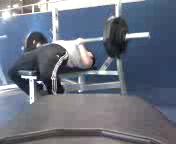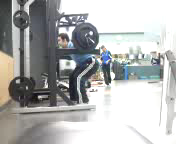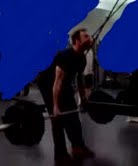POWERLIFTING
 |
 |
POWERLIFTING: How The Influence Of Competitive-Lifting Will Optimize Your Training!
Want to see some of the most functionally versatile athletes on the planet? Those that can sprint, jump, and lift impressively in many settings?
Such athletes aren't hard to find among competitive total-body lifters. (bench-press-specialists, though impressive, aren't total-body-lifters) . In fact, some Olympic lifters can out-pace trained sprinters up to 40 meters and champion-squatter Shane Hamman has back-flipped weighing over 300 lbs.
Some can argue that such feats are resultant of genetics more than training, but the training couldn't have hurt. As a matter of fact, the relative strength (RS) gained from powerlifting / competitive-lifting training can yield amazing benefits for everyone.

What is RS? RS/ relative strength is how strong you are relative to your body-weight(BW) /body-mass-index: (BMI). In competitive lifting, RS is generically calculated by dividing weight-lifted by body-weight. Dividing weight-lifted by BMI, however, is the RS measure in some research settings. Additionally, RS figured with BMI might correlate more with functional versatility and encourage broader pursuit of RS training, as it's more inclusive to taller/leaner athletes.
The following is list of just a few benefits of the relative strength associated with the training of competitive lifters:
1. Strength, especially, RS, is foundational to endurance (if your body-weight is a small fraction of your strength capacity, moving repetitively should be easier).
2. RS is foundational to power. If you produce 250 lbs of jump-force with 300 lbs of squat strength, building the squat to 400 should result in greater jump force.
3. RS is foundational to flexibility. Flexibility limitations are your nerves protecting you from weak/vulnerable positions. Your nerves more readily allow you to touch your toes if your hamstrings are strong enough to lift you back up.
4. RS is foundational to balance (being strong enough to squat with 1 leg helps keep you on your feet if the other foot slips)
5. RS is strongly correlated with body composition (how many overweight people can do pullups and 1-legged-squats?)
Question is: can most of us train like competitive lifters?
The answer is a resounding yes! Care must be taken, however, to ensure that the competitive lifting influence is adapted to the setting.
Factors like functional/injury status, height, proportions, performance standards and coordination are among the many things to consider before adopting competitive lifting philosophy.
Functional factors like height, injury etcetera, are usually adapted for powerlifting via different exercises/modification. Standards for evaluation/goals should also be adjusted.
Exercise Individuality
The powerlifter's 3 (bench-press, squat, and deadlift) aren't always the most productive exercises. Productive exercises allow for sufficient muscular tension and effort with safe default-form (the form resorted to at fatigue/load limits) . The bench press squat and deadlift can incline vulnerable shoulder, knee, and back position under high tension/effort; especially with bodies not suited for such lifts. Exercise alternatives/modifications that incline durable joint positions, even at fatigue/load limits, should be used for athletes not suited to be traditional lifters.
Performance Standards
When using performance standards, be sure they're appropriate and encouraging to the athletes trained. Holding tall/lean athletes like basketball players to standards of competitive lifters isn't realistic or encouraging. Competitive lifters usually lift loads a fraction of the distance other athletes do allowing inhuman poundage. A more productive approach, for the tall/lean, might entail comparing their lifts to elite lifters relative to BMI; which would likely have some of the stronger athletes surprisingly close to elite lifters.
Conclusion
As can be seen, the RS forged by powerlifting training philosophy offers many benefits as long as the setting is considered. Components of fitness like endurance, flexibility, balance, and body composition can all be improved by powerlifting and/or RS training. Adapting the exercises and performance standards for the setting will allow for more productive and encouraging powerlifting/RS training.